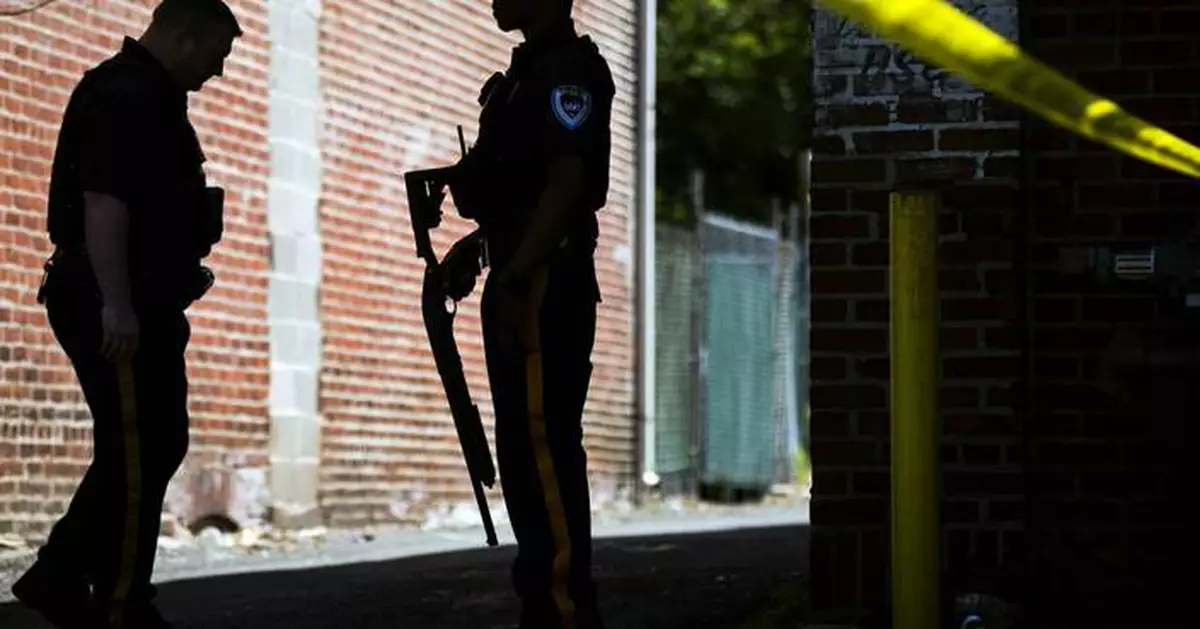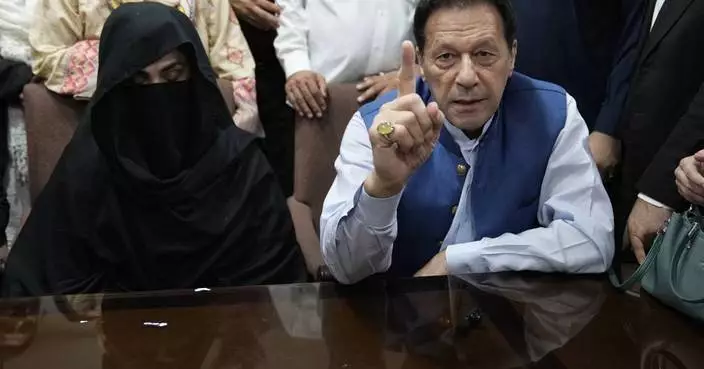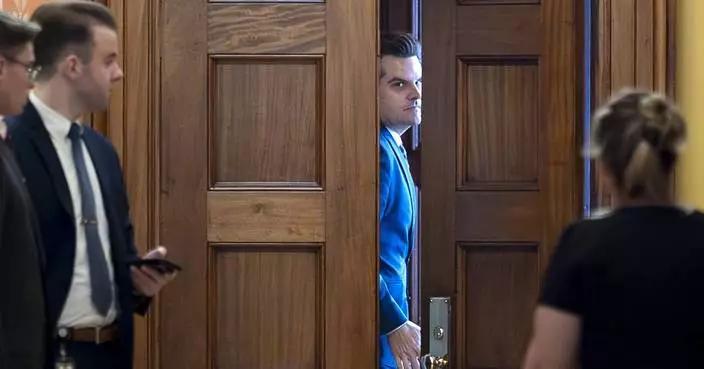TRENTON, N.J. (AP) — Police in New Jersey’s capital have shown a pattern of misconduct, including using excessive force and making unlawful stops, the Justice Department said Thursday, in a report documenting arrests without legal basis, officers escalating situations with aggression and unnecessary use of pepper spray.
The 45-page report comes after a roughly yearlong investigation into the Trenton Police Department, undertaken after an officer shot and paralyzed a young Black man who attempted to drive away when officers didn’t tell him why they had stopped him.
The Justice Department found the police department’s practices violate the Fourth Amendment and the report makes more than two dozen recommendations for remedial action.
“The people of Trenton deserve nothing less than fair and constitutional policing,” said U.S. Attorney for New Jersey Philip Sellinger. “When police stop someone in Trenton, our investigation found that all too often they violated the constitutional rights of those they stopped, sometimes with tragic consequences.”
The DOJ report paints a scathing picture of a department with about 260 sworn officers in a city of nearly 90,000 people, where many struggle due to poverty and high crime rates. The city is uniquely deprived of a property tax base that could fund public safety because of the many state government buildings.
The report outlines an incident in which an officer from the department’s violent crimes unit chased a 16-year-old boy who matched the description of someone with a gun. The officer grabbed the boy by his neck, slammed him into the hood of a car and insulted him. The boy was not armed.
The boy’s teacher approached the officer and told him the boy ran because he was scared of the police, the report says. The officer said the police are just trying to help.
“That’s not how a Black man sees it,” the teacher explained.
“That’s how an intelligent man would see it,” the officer said, according to the report.
In another instance, a Black woman was in her parked car on a Trenton street in 2022 when a male friend approached her to talk. An officer noticed him take something from his bag and concluded the woman must have been buying drugs. Officers drove the wrong way down a one-way street. The man ran and another officer opened the woman’s car door and grabbed her by the wrist. She asked what was going on and the officer used a vulgarity to tell her to get out of the car and threatened to pepper spray her. The police found no drugs and an arresting officer said he didn’t know why she had been stopped.
"Similar scenes have played out repeatedly on Trenton’s streets. With inadequate supervision and little training on the legal rules and well-accepted police procedures that should constrain their conduct, Trenton police officers engage in a pattern or practice of violating those rules,” the report said.
Trenton Mayor Reed Gusciora said in a statement that the city has cooperated and will continue to cooperate with the department, and that it has so far disbanded two police department street units that officials said violated the constitution.
“The City will continue to work cooperatively with the USDOJ, our state partners at the Department of Law and Public Safety and the Department of Community Affairs, local community organizations, and residents to implement the recommendations highlighted in the Report as quickly as possible,” Gusciora said.
The report recommends that the police department improves its use of force policies, implements better force training, boosts accountability and enhances data collection. It wasn't immediately clear how the Justice Department would ensure the recommended changes are implemented, but Assistant Attorney General Kristen Clarke said the department would cooperate with city officials and police.
“We look forward to rolling up our sleeves and working with officials to put in place the reforms necessary to address the two core violations that we have identified,” Clarke said.
Asked if the recent investigation of police practices in Trenton or any other city could result in a consent decree, Clarke replied that her focus Thursday was on making the findings about Trenton public. The Justice Department has opened investigations of 12 other police departments under the Biden administration, including in Louisville, Kentucky; Minneapolis; Phoenix; and Memphis, Tennessee.
The Trenton Police Department isn't the only one in New Jersey facing scrutiny for officer behavior and department practices. Police in Newark, the state's biggest city, entered into an agreement with the Justice Department nearly a decade ago to implement more community-oriented policing after a similar probe. In Paterson, the state's attorney general took over the police department after officers fatally shot a crisis intervention worker who had barricaded himself inside an apartment.
A once thriving manufacturing hub whose wire rope industry contributed to the construction of the Golden Gate Bridge, Trenton is suffering. Its poverty rate is over 26%, far in excess of the national rate of 11%, and home ownership and high school graduation rates are below the state’s average.
Darren “Freedom” Green, a community advocate in the city, said the report shone a light on a known reality and that Trenton must now agree to earnest engagement and policy reform.
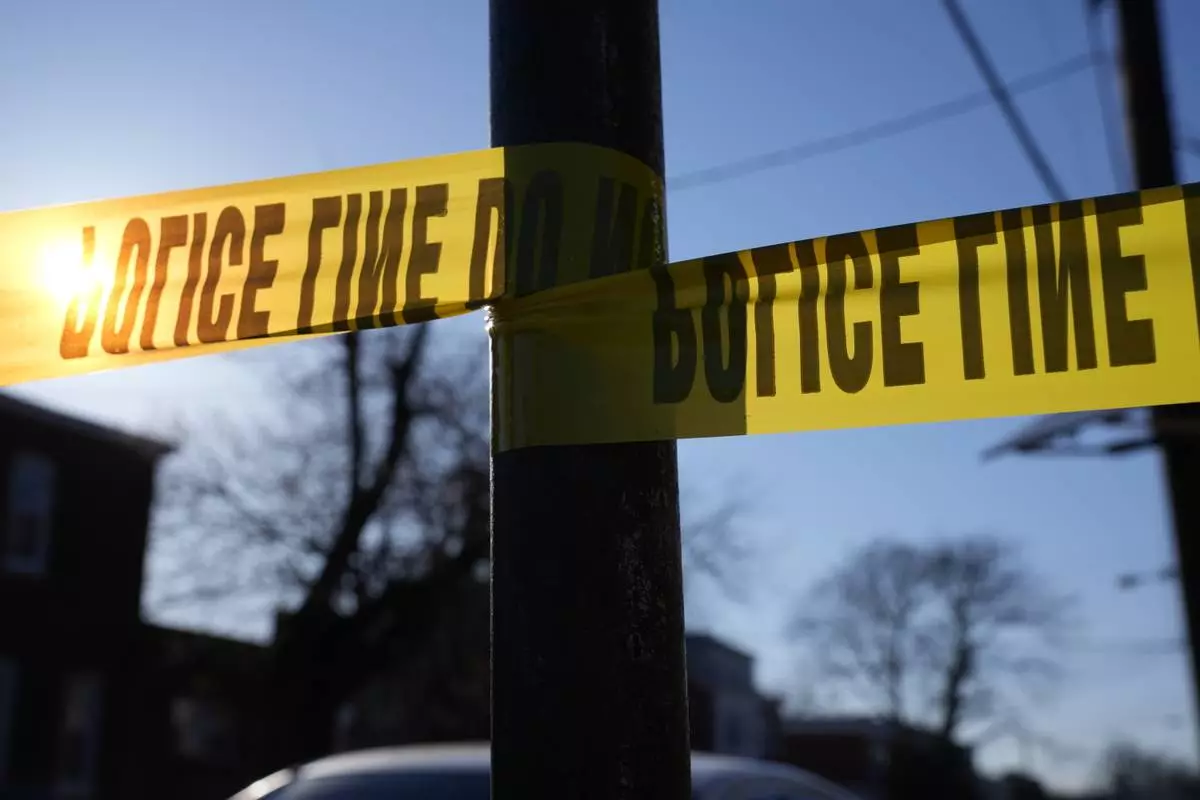
FILE - Tape cordons off a scene of police activity, Saturday, March 16, 2024, in Trenton, N.J. (AP Photo/Matt Rourke, File)
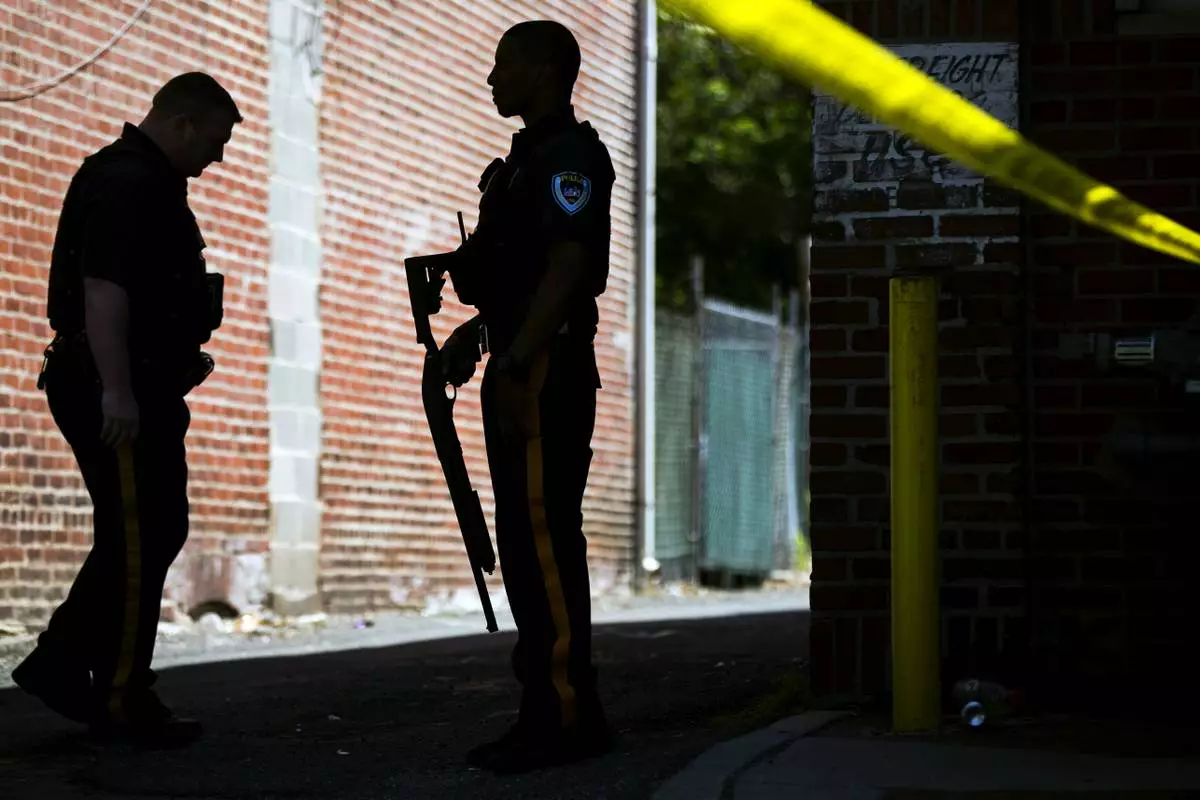
FILE - Police stand guard at the perimeter of a standoff with a man in a home in Trenton, N.J., Wednesday, May 10, 2017. (AP Photo/Matt Rourke, File)
The Kremlin fired a new intermediate-range ballistic missile at Ukraine on Thursday in response to Kyiv's use this week of American and British missiles capable of striking deeper into Russia, President Vladimir Putin said.
In a televised address to the country, the Russian president warned that U.S. air defense systems would be powerless to stop the new missile, which he said flies at ten times the speed of sound and which he called the Oreshnik — Russian for hazelnut tree. He also said it could be used to attack any Ukrainian ally whose missiles are used to attack Russia.
“We believe that we have the right to use our weapons against military facilities of the countries that allow to use their weapons against our facilities,” Putin said in his first comments since President Joe Biden gave Ukraine the green light this month to use U.S. ATACMS missiles to strike at limited targets inside Russia.
Pentagon deputy press secretary Sabrina Singh confirmed that Russia’s missile was a new, experimental type of intermediate range missile based on it’s RS-26 Rubezh intercontinental ballistic missile.
“This was new type of lethal capability that was deployed on the battlefield, so that was certainly of concern," Singh said, noting that the U.S. was notified ahead of the launch through nuclear risk reduction channels.
The attack on the central Ukrainian city of Dnipro came in response to Kyiv's use of longer-range U.S. and British missiles in strikes Tuesday and Wednesday on southern Russia, Putin said. Those strikes caused a fire at an ammunition depot in Russia's Bryansk region and killed and wounded some security services personnel in the Kursk region, he said.
“In the event of an escalation of aggressive actions, we will respond decisively and in kind,” the Russian president said, adding that Western leaders who are hatching plans to use their forces against Moscow should “seriously think about this.”
Putin said the Oreshnik fired Thursday struck a well-known missile factory in Dnipro. He also said Russia would issue advance warnings if it launches more strikes with the Oreshnik against Ukraine to allow civilians to evacuate to safety — something Moscow hasn’t done before previous aerial attacks.
Kremlin spokesman Dmitry Peskov initially said Russia hadn’t warned the U.S. about the coming launch of the new missile, noting that it wasn't obligated to do so. But he later changed tack and said Moscow did issue a warning 30 minutes before the launch.
Putin's announcement came hours after Ukraine claimed that Russia had used an intercontinental ballistic missile in the Dnipro attack, which wounded two people and damaged an industrial facility and rehabilitation center for people with disabilities, according to local officials. But American officials said an initial U.S. assessment indicated the strike was carried out with an intermediate-range ballistic missile.
The attack comes during a week of escalating tensions, as the U.S. eased restrictions on Ukraine's use of American-made longer-range missiles inside Russia and Putin lowered the threshold for launching nuclear weapons.
The Ukrainian air force said in a statement that the Dnipro attack was launched from Russia’s Astrakhan region, on the Caspian Sea.
“Today, our crazy neighbor once again showed what he really is,” Ukrainian President Volodymyr Zelenskyy said hours before Putin's address. “And how afraid he is.”
Russia was sending a message by attacking Ukraine with an intermediate-range ballistic missile capable of releasing multiple warheads at extremely high speeds, even if they are less accurate than cruise missiles or short-range ballistic missiles, said Matthew Savill, director of military sciences at the Royal United Services Institute, a London-based think tank.
“Why might you use it therefore?” Savill said. "Signaling — signaling to the Ukrainians. We’ve got stuff that outrages you. But really signaling to the West ‘We’re happy to enter into a competition around intermediate range ballistic missiles. P.S.: These could be nuclear tipped. Do you really want to take that risk?’”
Military experts say that modern ICBMs and IRBMs are extremely difficult to intercept, although Ukraine has previously claimed to have stopped some other weapons that Russia described as “unstoppable,” including the air-launched Kinzhal hypersonic missile.
David Albright, of the Washington-based think tank the Institute for Science and International Security, said he was “skeptical” of Putin’s claim, adding that Russian technology sometimes “falls short.”
He suggested Putin was “taunting the West to try to shoot it down ... like a braggart boasting, taunting his enemy.”
Earlier this week, the Biden administration authorized Ukraine to use the U.S.-supplied, longer-range missiles to strike deeper inside Russia — a move that drew an angry response from Moscow.
Days later, Ukraine fired several of the missiles into Russia, according to the Kremlin. The same day, Putin signed a new doctrine that allows for a potential nuclear response even to a conventional attack on Russia by any nation that is supported by a nuclear power.
The doctrine is formulated broadly to avoid a firm commitment to use nuclear weapons. In response, Western countries, including the U.S., said Russia has used irresponsible nuclear rhetoric and behavior throughout the war to intimidate Ukraine and other nations.
They have also expressed dismay at the deployment of thousands of North Korean troops to Russia to fight against Ukraine.)
More than 1,000 days into war, Russia has the upper hand, with its larger army advancing in Donetsk and Ukrainian civilians suffering from relentless drone and missile strikes.
Analysts and observers say the loosening of restrictions on Ukraine's use of Western missiles is unlikely to change the the course of the war, but it puts the Russian army in a more vulnerable position and could complicate the logistics that are crucial in warfare.
Putin has also warned that the move would mean that Russia and NATO are at war.
“It is an important move and it pulls against, undermines the narrative that Putin had been trying to establish that it was fine for Russia to rain down Iranian drones and North Korean missiles on Ukraine but a reckless escalation for Ukraine to use Western-supplied weapons at legitimate targets in Russia,” said Peter Ricketts, a former U.K. national security adviser who now sits in the House of Lords.
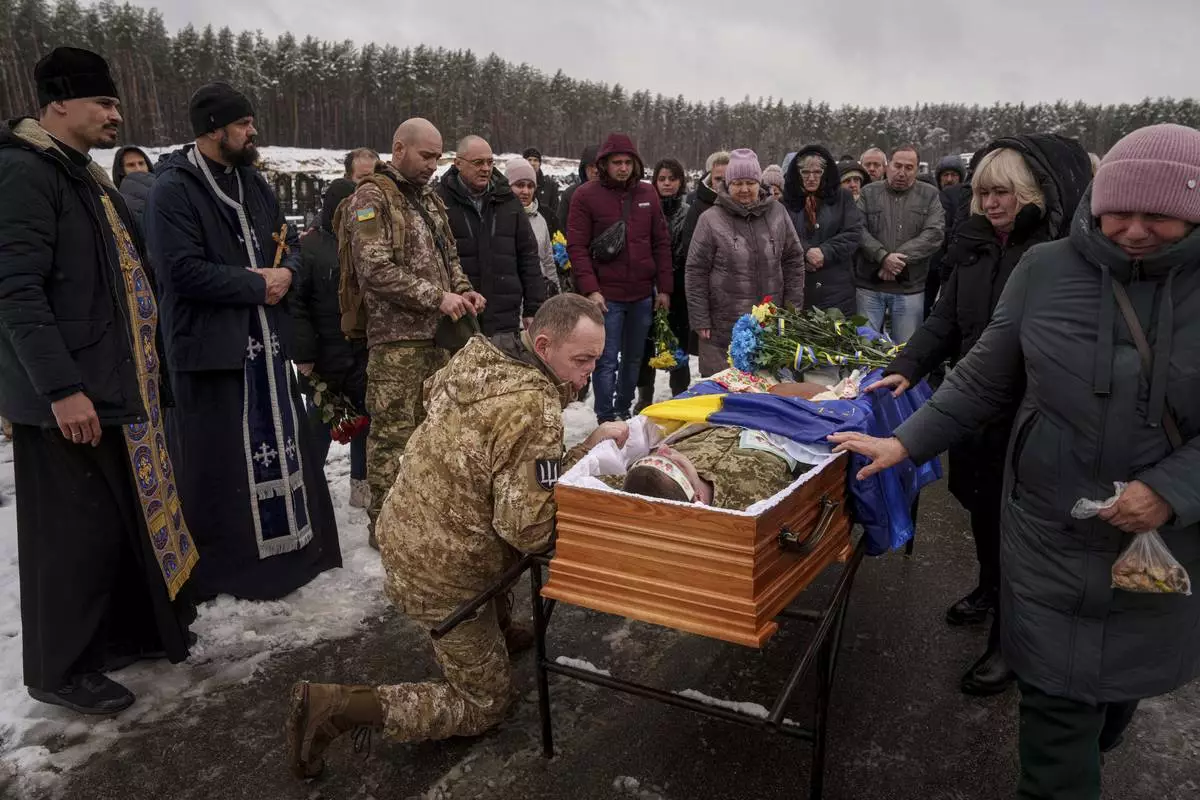
Ukrainian serviceman Roman bids farewell to his comrade of the 47th brigade Serhii Solovyov who was killed during fighting with Russian Forces in Kursk oblast on November 12, during the funeral ceremony in Irpin, Kyiv region, Ukraine, Nov. 21, 2024. (AP Photo/Evgeniy Maloletka)
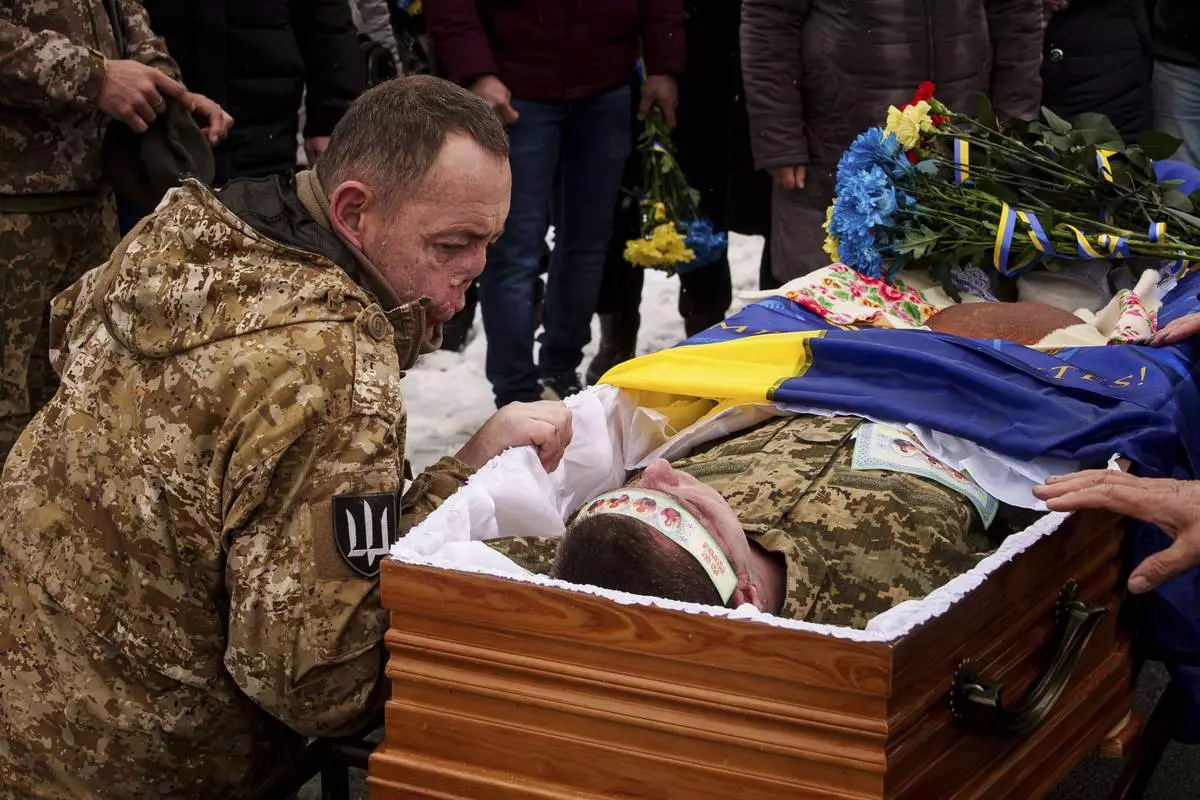
Ukrainian serviceman Roman bids farewell to his comrade of the 47th brigade Serhii Solovyov who was killed during fighting with Russian Forces in Kursk oblast on November 12, during the funeral ceremony in Irpin, Kyiv region, Ukraine, Nov. 21, 2024. (AP Photo/Evgeniy Maloletka)
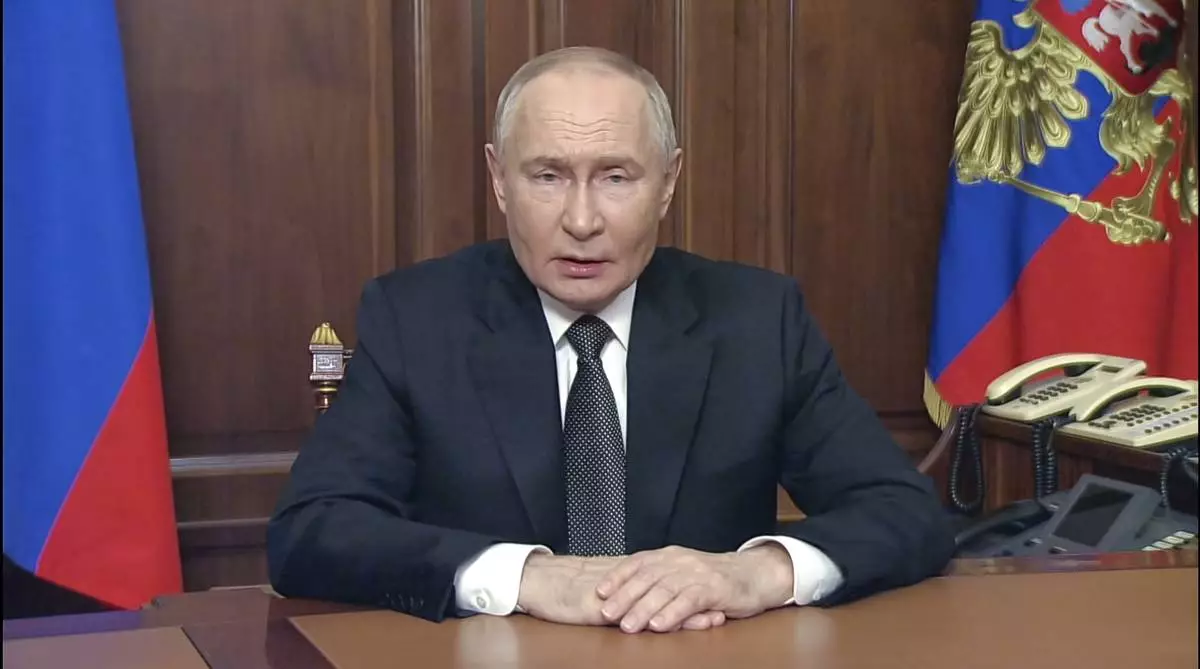
In this image made from video released by the Russian Presidential Press Service, Russian President Vladimir Putin addressees the nation at the Kremlin in Moscow, Russia, Thursday, Nov. 21, 2024. (Russian Presidential Press Service via AP)
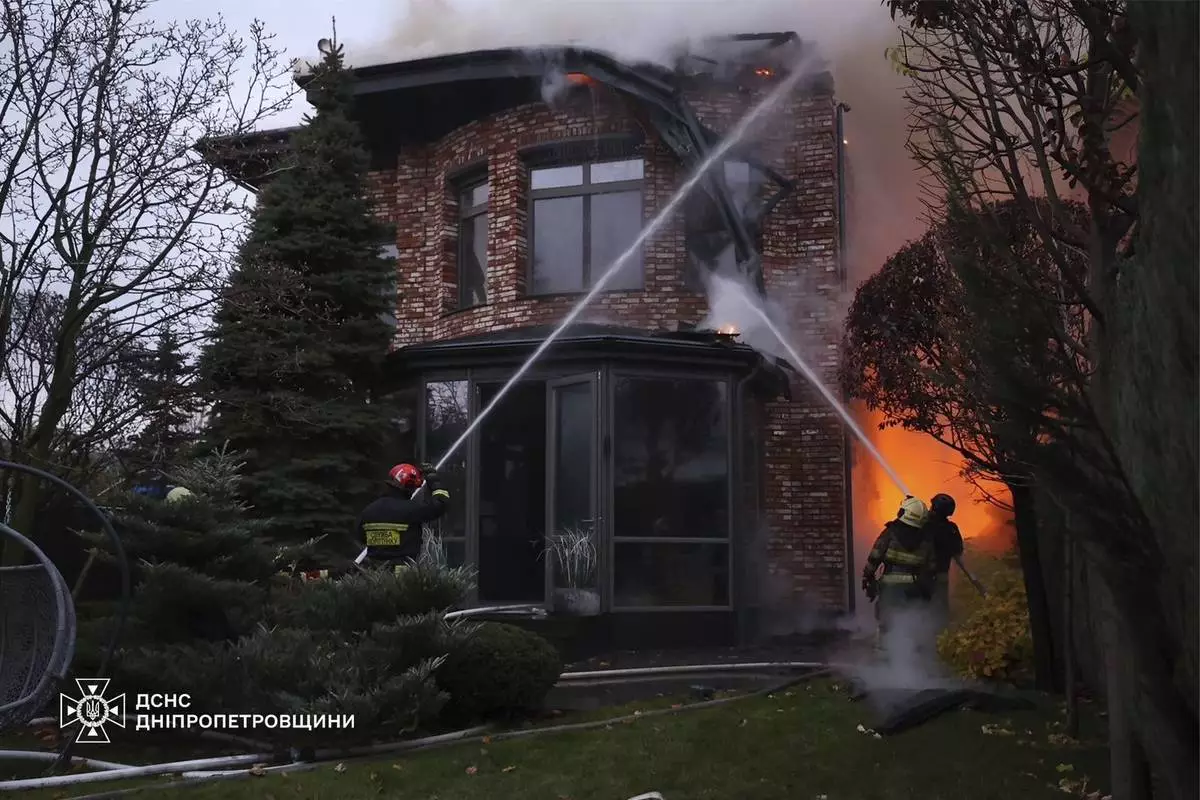
In this photo provided by the Ukrainian Emergency Services on Nov. 21, 2024, rescue workers put out a fire of a burning house damaged by a Russian strike on Dnipro, Ukraine. (Ukrainian Emergency Service via AP)
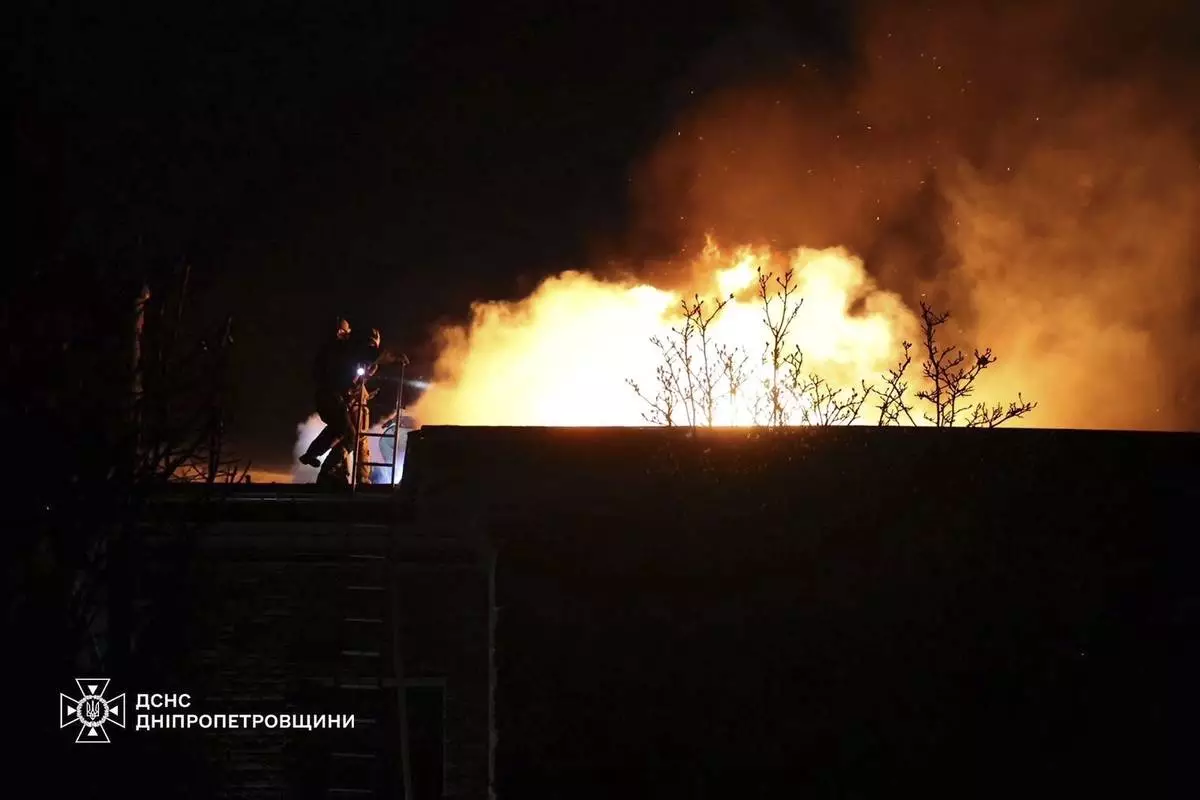
In this photo provided by the Ukrainian Emergency Services on Nov. 21, 2024, rescue workers put out a fire of a building which was heavily damaged by a Russian strike on Dnipro, Ukraine. (Ukrainian Emergency Service via AP)
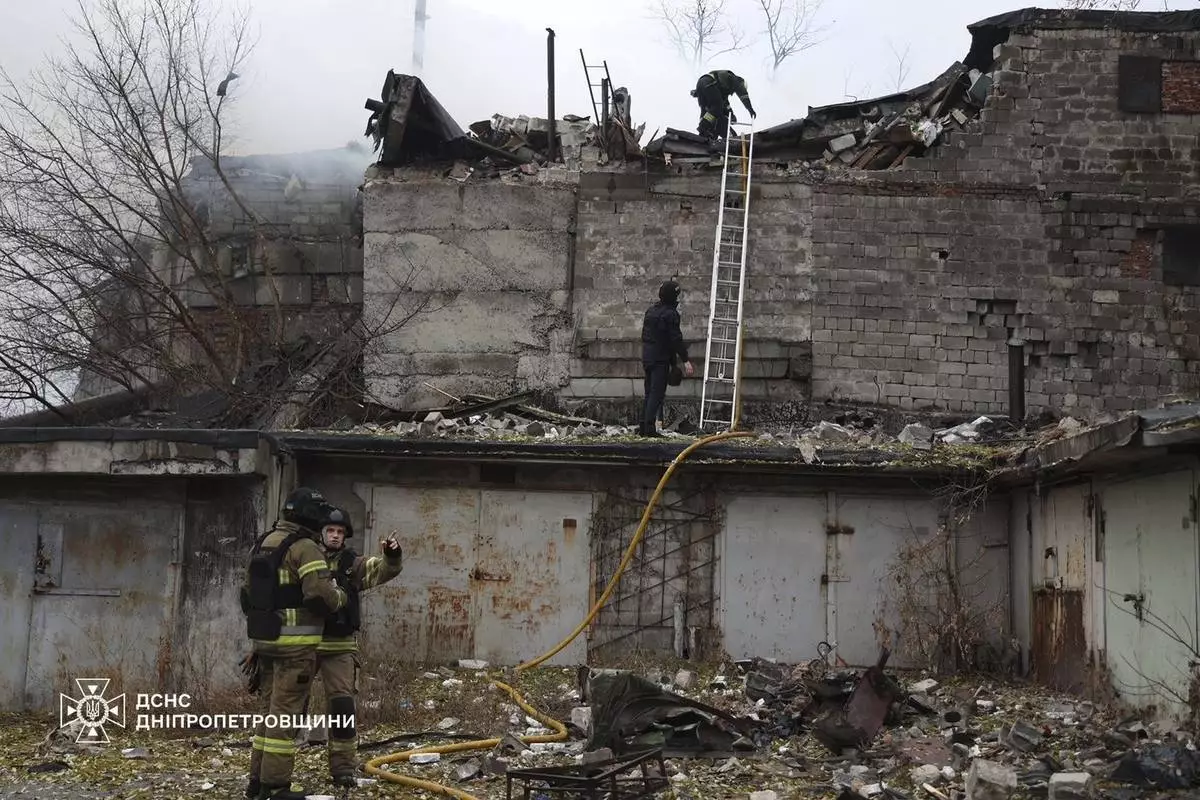
In this photo provided by the Ukrainian Emergency Services on Nov. 21, 2024, rescue workers put out a fire of a building which was heavily damaged by a Russian strike on Dnipro, Ukraine. (Ukrainian Emergency Service via AP)
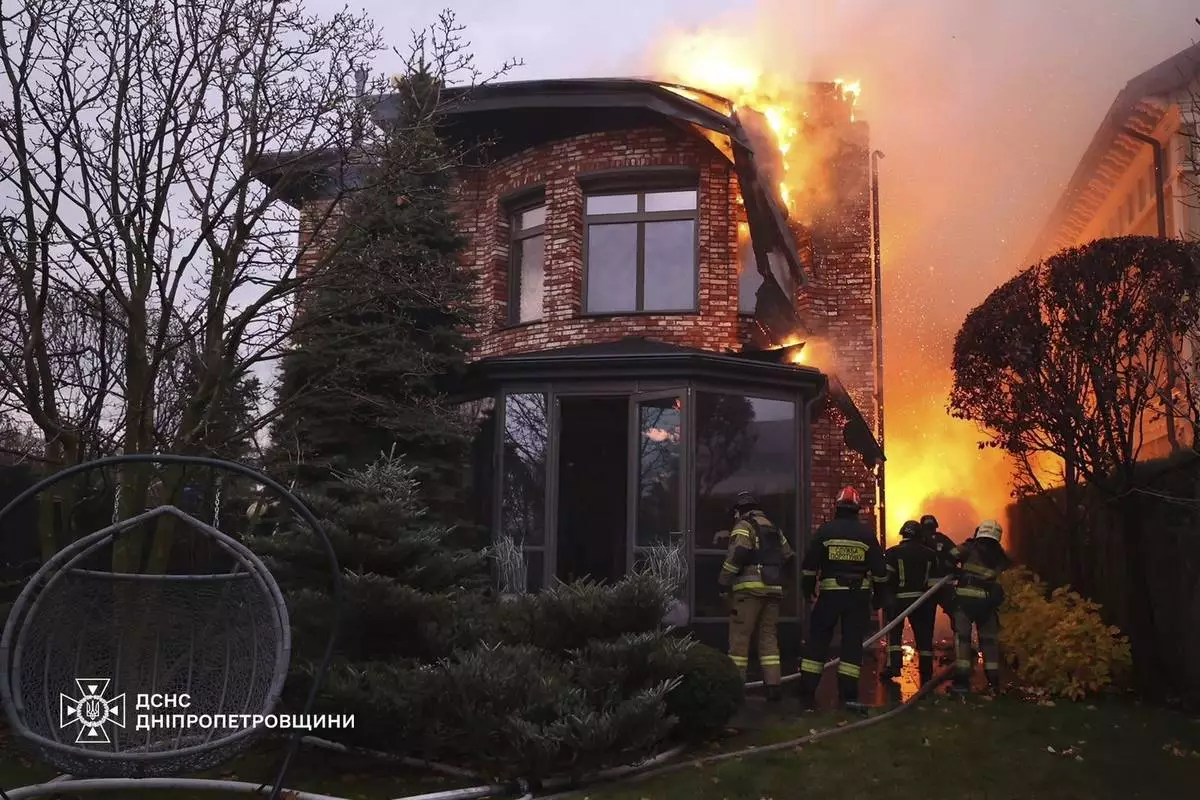
In this photo provided by the Ukrainian Emergency Services on Nov. 21, 2024, rescue workers put out a fire of a burning house damaged by a Russian strike on Dnipro, Ukraine. (Ukrainian Emergency Service via AP)
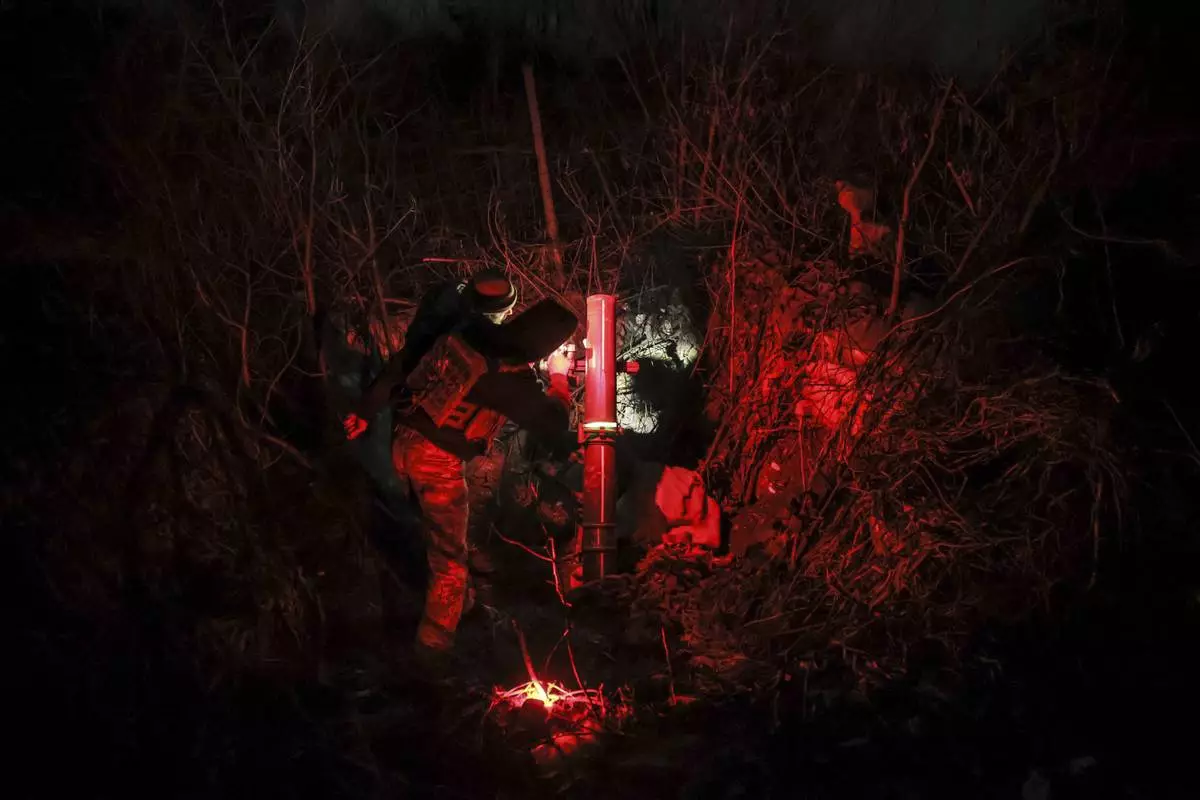
In this photo provided by Ukraine's 24th Mechanised Brigade press service, serviceman of the 24th Mechanised Brigade prepares to fire 120mm mortar towards Russian positions near Chasiv Yar town, in Donetsk region, Ukraine, Tuesday, Nov. 19, 2024. (Oleg Petrasiuk/Ukrainian 24th Mechanised Brigade via AP)
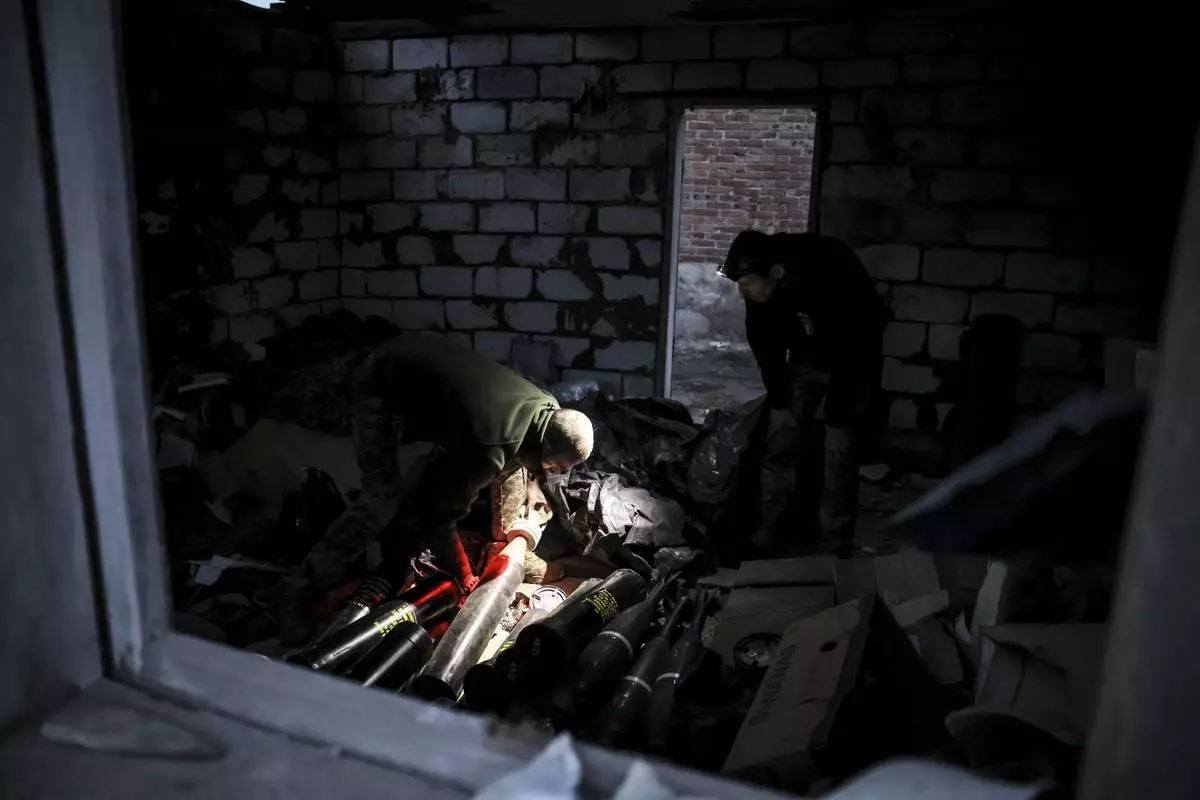
In this photo provided by Ukraine's 24th Mechanised Brigade press service, servicemen of the 24th Mechanised Brigade prepare to fire 120mm mortar towards Russian positions near Chasiv Yar town, in Donetsk region, Ukraine, Tuesday, Nov. 19, 2024. (Oleg Petrasiuk/Ukrainian 24th Mechanised Brigade via AP)

In this photo provided by Ukraine's 24th Mechanised Brigade press service, serviceman of the 24th Mechanised Brigade prepares to fire 120mm mortar towards Russian positions near Chasiv Yar town, in Donetsk region, Ukraine, Tuesday, Nov. 19, 2024. (Oleg Petrasiuk/Ukrainian 24th Mechanised Brigade via AP)

In this photo provided by Ukraine's 24th Mechanised Brigade press service, serviceman of the 24th Mechanised Brigade prepares to fire 120mm mortar towards Russian positions near Chasiv Yar town, in Donetsk region, Ukraine, Tuesday, Nov. 19, 2024. (Oleg Petrasiuk/Ukrainian 24th Mechanised Brigade via AP)

In this photo provided by Ukraine's 24th Mechanised Brigade press service, servicemen of the 24th Mechanised Brigade rest in a shelter on the front line near Chasiv Yar town, in Donetsk region, Ukraine, Tuesday, Nov. 19, 2024. (Oleg Petrasiuk/Ukrainian 24th Mechanised Brigade via AP)

In this photo provided by Ukraine's 24th Mechanised Brigade press service, a serviceman of the 24th Mechanised Brigade rests in a shelter on the front line near Chasiv Yar town, in Donetsk region, Ukraine, Tuesday, Nov. 19, 2024. (Oleg Petrasiuk/Ukrainian 24th Mechanised Brigade via AP)
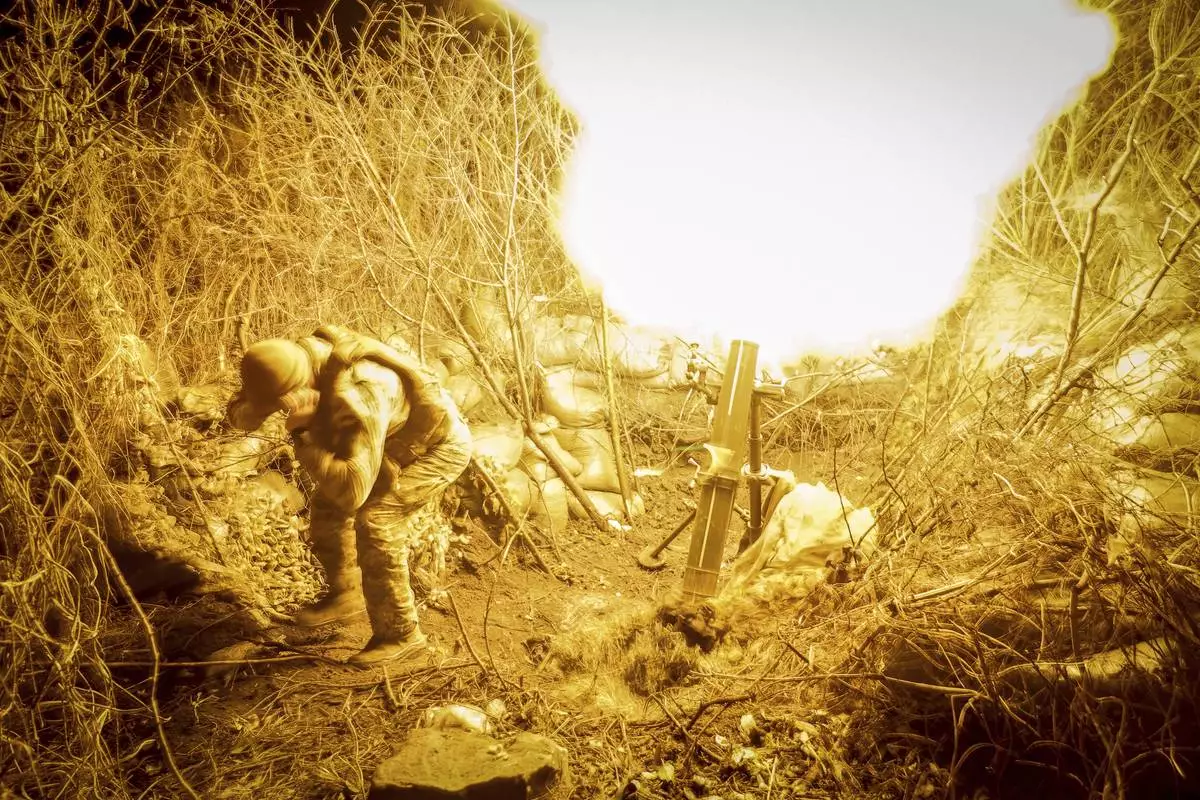
In this photo provided by Ukraine's 24th Mechanised Brigade press service, servicemen of the 24th Mechanised Brigade fire 120mm mortar towards Russian positions near Chasiv Yar town, in Donetsk region, Ukraine, Tuesday, Nov. 19, 2024. (Oleg Petrasiuk/Ukrainian 24th Mechanised Brigade via AP)




